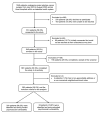Insult to Injury: Cross-Sectional Analysis of Preoperative Psychosocial Vulnerabilities in Adult Patients Undergoing Major Elective Cancer Surgery
- PMID: 40940955
- PMCID: PMC12427204
- DOI: 10.3390/cancers17172859
Insult to Injury: Cross-Sectional Analysis of Preoperative Psychosocial Vulnerabilities in Adult Patients Undergoing Major Elective Cancer Surgery
Abstract
Background/Objectives: Psychosocial factors are not routinely screened for during the perioperative period, even though they significantly influence overall health. This study aimed to inventory the psychosocial vulnerabilities among patients undergoing cancer surgery. Methods: We conducted a cross-sectional analysis of a researcher-administered psychosocial screener implemented within a statewide health system between July 2023 and August 2025. A 45 min screener was offered to consecutive adult patients within two weeks before their major elective cancer surgery. Residential addresses were geocoded to assign neighborhood deprivation percentiles for the Area Deprivation Index (ADI) and the Social Vulnerability Index (SVI). Elevated psychosocial vulnerability was determined based on a model-based clustering approach, and a high deprivation index was defined as ≥75th percentile. Results: A total of 383 patients (37% response rate) completed the screener, including colorectal (40%), thoracic (36%), and surgical oncology (24%) patients, with a median age of 66 years (IQR, 57-73). Over half (52.0%, n = 199) reported ≥2 psychological and ≥2 social vulnerabilities. Younger patients (p = 0.021), non-white patients (p < 0.001), patients identifying as non-heterosexual (p = 0.014), without a partner (p < 0.001) or private insurance (p = 0.040), and those with lower household income (p < 0.001) were more likely to report elevated psychosocial vulnerability. Patients with elevated psychosocial vulnerability were more likely to reside in deprived neighborhoods (ADI: 34.0 vs. 29.0, p = 0.035; SVI: 0.35 vs. 0.27, p = 0.005). Conclusions: Patients undergoing major cancer surgery experience substantial psychosocial vulnerabilities, particularly those from socioeconomically disadvantaged neighborhoods. Future work should identify the psychosocial factors most predictive of poor surgical outcomes to guide targeted preoperative interventions.
Keywords: cancer surgery; health-related social needs; major surgery; neighborhood characteristics; prehabilitation; preoperative optimization; psychosocial vulnerability; social determinants of health.
Conflict of interest statement
The authors declare no conflicts of interest. The funders had no role in the design of the study; in the collection, analyses, or interpretation of data; in the writing of the manuscript; or in the decision to publish the results.
Figures



References
Grants and funding
LinkOut - more resources
Full Text Sources

